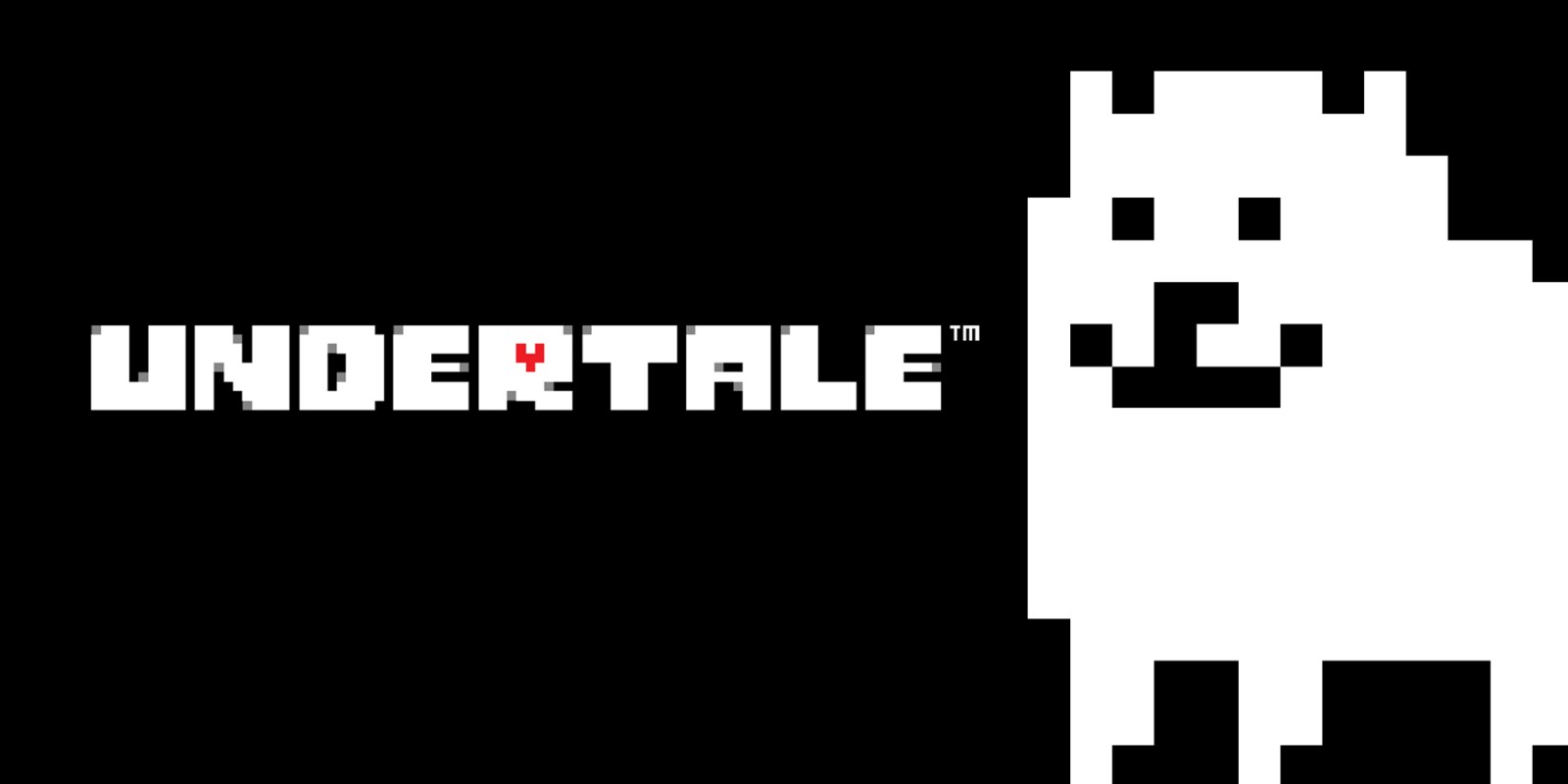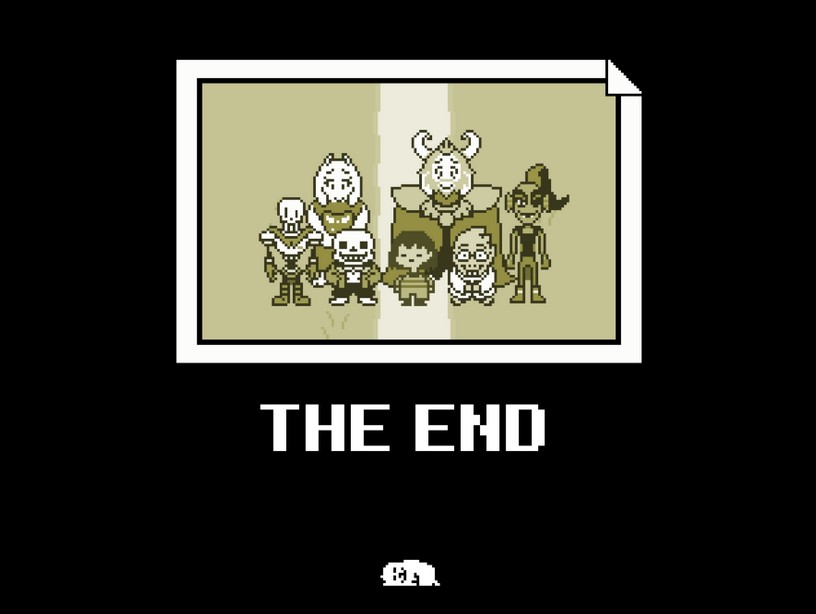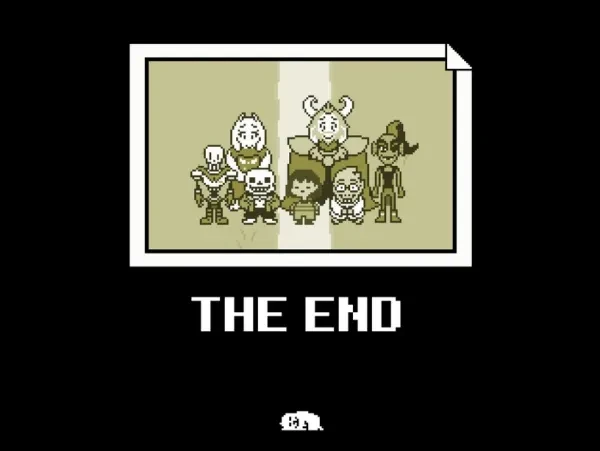
Why does Undertale have different endings?
Undertale has a variety of endings depending on the choices you make in the game. Typically referred to as the Pacifist/True Pacifist, Neutral, and Genocide Routes, with a bonus Hard Mode, there are drastic changes between them. Understanding them, how to get them, and how each route can have different variations within them can be daunting at first. So, here’s a guide on the Undertale endings and how to get them.
1. Hard Mode
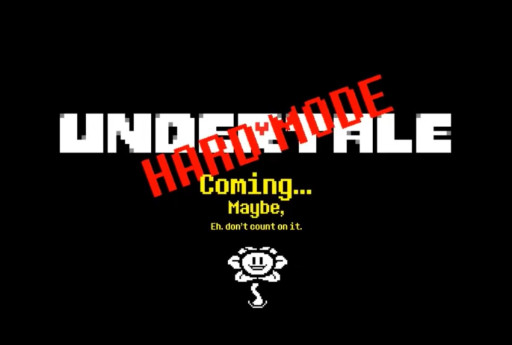
Will Hard Mode eventually be updated to go past the Ruins? Eh, don't count on it
The Pacifist version of Hard Mode
Hard mode is a bonus route activated when you name the Fallen Human “Frisk” in the menu. It only lasts until the end of the Ruins (which function as the tutorial area). It offers harder battles, different enemies, and slight dialogue changes.
This route can be completed as a Pacifist, Neutral, or Genocide Route itself, marking it different than the actual True Pacifist, Neutral, and Genocide Routes. Hard Mode is extra content made to be extra hard in the tutorial area that can otherwise be played any way you want.
2. Neutral Route
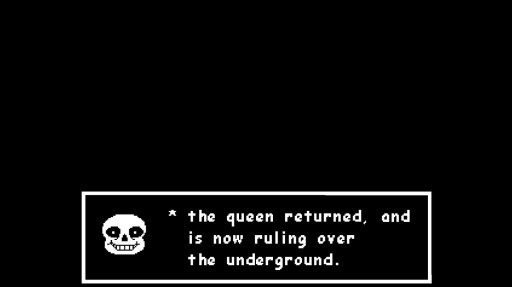
A Neutral Ending
A video that shows all Neutral Route Endings
The Neutral Route acts as the default Route. It occurs when these conditions are met:
- The protagonist does not befriend all plot pivotal characters (Papyrus, Undyne, and Alphys)
- The True Lab has not been explored
- The protagonist kills any, but not every, monster in the Underground
Essentially, the Neutral Route only occurs when the conditions for True Pacifist or Genocide are not met. It also acts as a prerequisite to the True Pacifist Route, so long as the protagonist has not killed anyone.
There are many variations of the Neutral Route. These occur depending on what monsters the protagonist has killed during the game and a few other actions, like carrying the Snowman Piece throughout the game.
They all end with King Asgore’s death, the Six Human SOULS being lost, Flowey either defeated or didn’t bother to fight, and the monsters still trapped in the Underground while they assume the protagonist escaped. Sans will always call the protagonist on their cell phone, though the dialogue changes depending on the previous conditions met.
A Neutral Route not followed by a True Pacifist is likely to be the first route completed by someone who isn’t aware of how Undertale loves to subvert expectations of typical RPGs. As most RPGs involve killing random encounter enemies to gain experience to level up to continue the game, there is not necessarily a reason to think Undertale would be any different– at least at first.
So many people go into the game and kill random encounter monsters and other perceived enemies, causing them to get a Neutral ending and making them unable to continue to a True Pacifist ending within the same SAVE.
The last battle in this ending is against Photoshop Flowey.
3. Genocide Route
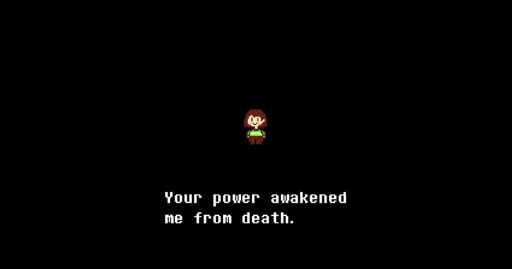
Chara telling you why they continued the Genocide Route in your stead
The Genocide Route Ending
This is a pretty hard ending to get. It’s unlikely to be someone’s first ending because there are a few specifics that are unlikely to happen by accident. To complete a Genocide Route, these conditions must be met:
- The protagonist must exhaust the random encounter kill counter in every region (Ruins, Snowdin Forest, Waterfall, Hotland/CORE) and must be completed before reaching the final encounter of that area.
- Kill every boss and miniboss
The random encounter kill counter essentially means that there are a specific number of random encounters in each area that must be killed; once that number is reached anytime a random encounter is triggered instead of a monster appearing, the phrase “But nobody came” comes up, and the battle ends. When roaming an area for random encounters, they will become fewer and far between to reflect that there are fewer monsters to battle. So, it is unlikely that a player without the knowledge of this mechanic will manage to complete it.
Some specific enemies in a region must be killed before the kill counter is exhausted or else the Genocide Route is aborted. For example, if the kill counter for Snowdin isn’t exhausted before triggering the fight against Papyrus then the game will continue as a Neutral Route.
During the Genocide Route, many of the ‘fun’ parts of the game are abandoned. Puzzles are completed before you arrive, there’s no chance for character banter as they’re all afraid of you. Many of the non-fightable characters flee before you reach their area, meaning you have no chance at all to interact with them. This can be seen with the Snowdin Shopkeeper; she and her family have fled Snowdin, and so you can’t interact with her shop the way you would in a Neutral or True Pacifist Route.
The game begins to feel very empty. You spend much of the game grinding the random encounters and fighting hard battles. Some of the battles become easier; battles that in a Neutral or True Pacifist Route were among the most difficult are suddenly finished in one attack. The play-payoff just becomes… boring.
Of course, this is exactly what it was made to be. As Undertale loves to subvert expectations, some of the characters talk to you– you, the player, not the protagonist– and wonder why you’ve chosen to complete the Genocide Route. Curiosity– did you just want to see every possible ending for the game? Was it that you couldn’t bear to say goodbye (many people play the Genocide Route after completing at least one other run)? Was it a completionist’s mindset?
The Genocide Route is the only route to offer a battle against Sans, who is often agreed as having the most difficult battle and the best battle music. He acts as the last line of defense between you and the rest of the world. To defeat him, you defeat the game mechanics– attacking him out of turn. This is scripted, and technically, it isn’t you that does it– it’s the First Human.
The First Human, also called Chara, is a character whose story is tied deeply into the story of Undertale, and when the protagonist falls into the Underground at the beginning of the game they unwittingly pick up Chara’s soul. Throughout the Genocide Route, your actions teach Chara how the world works.
At the end of the Genocide Route, Chara speaks to you directly, commenting on your actions throughout the game. They then give you a choice– to erase the world or not to erase the world. If you agree, they call you “a great partner”, and if you don’t, you get a jumpscare and Chara erases the world anyway.
In the PC version, the game will close after Chara destroys the world. In console versions, the game goes black and plays audio of wind howling. After restarting the game, and/or waiting 10 minutes, Chara returns, wondering why you’re still there.
Chara will give you the option to give your SOUL in return for resetting the game. If you disagree, you will have to wait 10 more minutes for Chara to return. If you agree, the game will close and the next time you start it it will start like the game has just been installed.
However, even if the game is reset, all future playthroughs are permanently altered. Not by any drastic amounts, only with slight dialogue changes or ending images.
4. True Pacifist Route
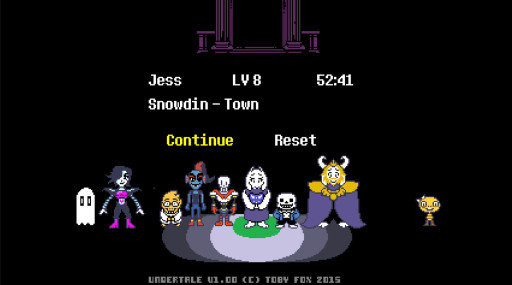
The load screen near the end of a Pacifist Route
The True Pacifist Route ending, with the decision to stay with the monsters or go home at 36:06
The True Pacifist Route is the most popular. It is the happiest ending, with the monsters being freed from the Underground and no deaths whatsoever. These conditions must be met:
- A Neutral Route has been completed
- No monsters were killed throughout the game
- Papyrus, Alphys, and Undyne were all befriended
- The True Lab has been explored
After escaping the Underground in the Neutral Route, Flowey will offer you a chance to ‘go back’ and will essentially allow you to go back in time to right before the battle against Asgore. You then get the chance to befriend Papyrus and Undyne if you haven’t already, and befriend Alphys by exploring the True Lab.
Then you can return to Asgore and battle him. However, that battle will end with Toriel interrupting instead of Flowey. Shortly after, all of the other characters you have befriended during the game– Sans, Papyrus, Undyne, and Alphys– will arrive intending to do the same thing.
Shortly after that, Flowey attacks and subdues your friends, taunts you, and tries to attack you– only for your tied-up friends to defend you. Other monsters from the Underground will show up, showing support for you after you spared and were kind to them during the random encounters.
It’s an incredibly heartwarming scene. Unfortunately, this is exactly what Flowey wants, and he promptly absorbs the 6 Human SOULS that Asgore had collected, and then all of the SOULS of the monsters in the Underground.
He then gains the form of a goat monster like Asgore and Toriel, rather than his previous form of a Golden Flower. He introduces himself as Asriel Dreemurr, and a battle ensues, a parallel to the battle against Omega Flowey in the Neutral Route.
At the end of this battle, after SAVING your friends and then Asriel, he chooses to use the SOULS he’s absorbed and break the barrier, freeing the monsters from the Underground.
After this, the protagonist is presented with a decision– to stay with the monsters as an ambassador, or to go back to whatever life they had before the Underground. If you choose to stay with Toriel, the True Pacifist Credits will play, interspersed with cutscenes of what the monsters are doing now that they’re freed. If you choose to leave, then you will get a photo of the protagonist and their friends.
This ends the game. If you start the game again, using the same SAVE, then Flowey will appear and ask you not to reset the game. This is because he doesn’t want the monsters to be stuck in the Underground again. Still, you have the option for a True Reset, to start the game completely over again.
All of the different Routes have a story to tell; the story of the Underground, of the previous fallen children, of the royal family that the First Human was adopted by. Each route gives a different version of the story, a little more, a little less, so to get the absolute complete story every single run must be completed.
Another thing to note is that when the game asks you to name the fallen human at the beginning of a SAVE, it leads you to believe that you are naming the protagonist, the Eighth Human, the character you play as. In reality, you are naming the First Human. The technical names are Chara (the First Human) and Frisk (the Eighth Human), but during a playthrough, ‘Chara’ becomes the name you choose and Frisk isn’t referred to ask Frisk until the very end… of the Pacifist Route.
So, that’s that. Four different Routes, three main and one bonus. All telling different parts of the same story. The Neutral is the easiest to get, and the most common to get if you don’t know how the game works, and with the most variations. The Genocide is difficult, unrewarding, and will permanently alter any playthroughs after. The True Pacifist is the happiest, taking nearly as much effort as the Genocide, but with a much higher emotional reward.
